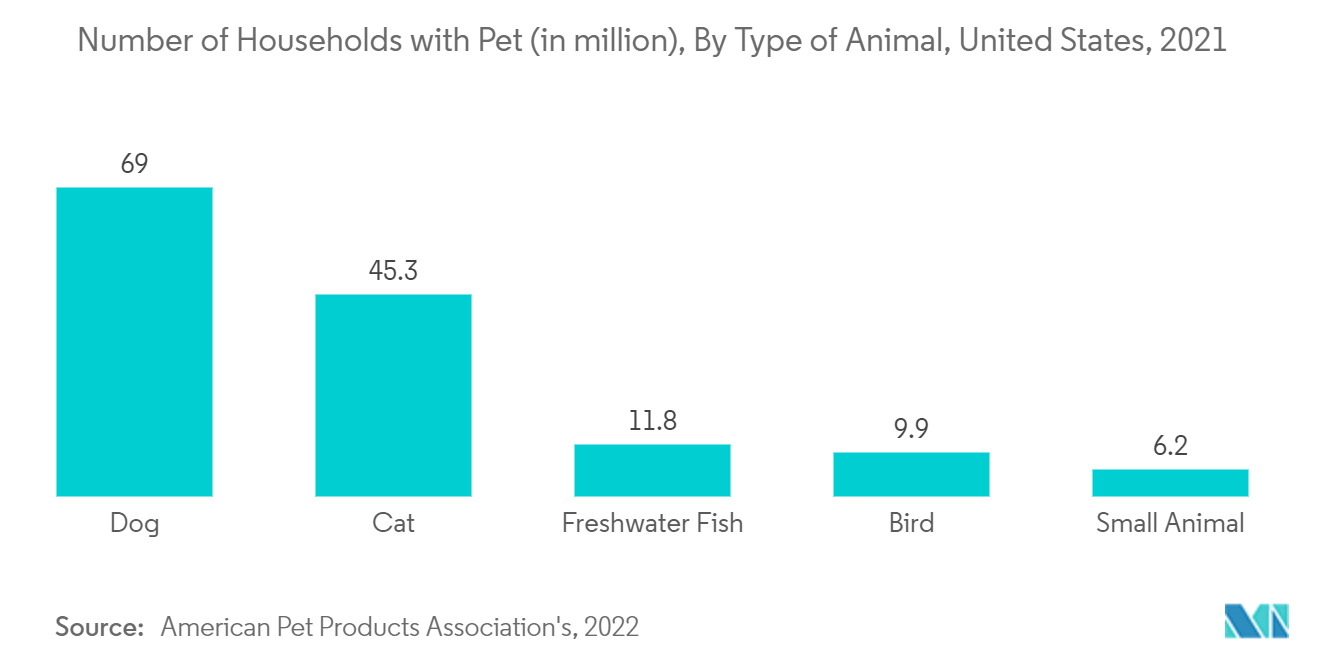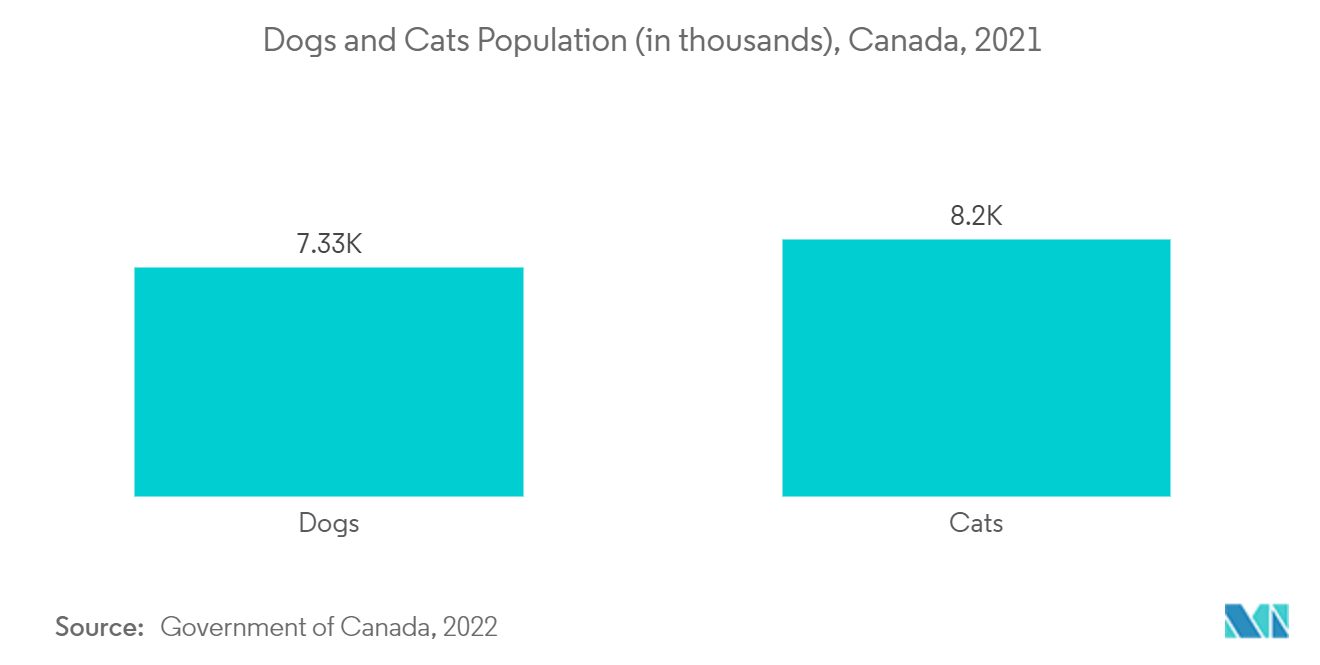Market Trends of North America Veterinary Healthcare Industry
The Vaccine Segment is Anticipated to Witness Considerable Growth Over the Forecast Period
With increasing government initiatives and effective and unique vaccination programs in the country, the vaccine segment is anticipated to grow over the forecast period. Vaccinating animals to prevent common diseases is a practice that must be followed by companion animal/ pet owners. In North America, vaccines are given by veterinarians as part of routine visits. For instance, according to Health Canada data updated in February 2022, if any person is traveling with a pet or planning to import an animal to Canada, they will need the right paperwork at the border to meet Canada's import requirements. In addition, if proper vaccination data or paperwork is missing, the owners are not allowed to take their companion animal to the Canadian border. These strict government initiatives and regulations are increasing awareness about pet vaccination for diseases such as rabies, thereby driving the segment growth.
The product launches by the key players are also anticipated to propel the segment growth over the forecast period. For instance, in May 2022, Ceva expanded its oral rabies vaccine portfolio with the acquisition of Canadian firm Artemis Technologies, Inc. With this acquisition, Ceva expanded its presence in the segment to North America. Similarly, in January 2022, rabies was identified in a dog in Ontario that was imported from Iran. That dog developed neurological signs that progressed rapidly over six days despite medical treatment. These cases each led to extensive investigations involving multiple public health units. Toronto Public Health issued a press release to locate one person who had contact with the second dog. A total of 51 individuals received rabies post-exposure prophylaxis (PEP) as a result of contact with the two dogs. Both dogs had been vaccinated for rabies in Iran before importation with a vaccine that was not licensed in Canada. Furthermore, in September 2021, the Canadian Animal Health Institute (CAHI) launched its 2021 World Rabies Day Initiative for Remote Indigenous Communities in Canada to improve both animal health and public health in these communities by supporting increased access to canine rabies vaccinations in areas where veterinary services are not readily available.

The Dogs and Cats Segment is Anticipated to Witness Significant Growth Over the Forecast Period
Dogs are the most adopted companion animals, and as more dogs are being adopted, the awareness about zoonotic diseases is also improving, driving the growth of the segment. In September 2022, the Canadian Animal Health Institute (CAHI) shared the 2022 Pet Population Survey and as per the survey, Canada's dog and cat populations continued to grow, increasing from 7.7 million to 7.9 million for dogs and from 8.1 million to 8.5 million for cats. The survey also stated that in the dog and cat populations, the annual dog medicalization rate remained stable at 86%, while the multi-year trend of increasing feline medicalization rates continued. Thus, such instances are expected to propel the segment growth over the forecast period.
Key product launches, high concentration of market players or manufacturers' presence, acquisitions and partnerships among major players, and increasing pet adoption in the United States are some of the factors driving the growth of the segment. For instance, according to the National Pet Owners Survey 2021-2022, conducted by the American Pet Products Association (APPA), around 70.0% of United States households owned a pet, which equates to 90.5 million homes, including 45.3 million cats and 69.0 million dogs. Furthermore, according to the U.S. Department of Agriculture, there were 103.0 million cattle and 32.1 million beef cows in the U.S. in July 2020, and this number is expected to grow substantially in the coming years. Moreover, product approvals for dog and cat treatment are also driving the segment's growth. For instance, in January 2022, Zoetis Inc. announced that the U.S. Food and Drug Administration (FDA) had approved Solensiato to control the pain of osteoarthritis (OA) in cats. It will help to improve mobility, comfort, and the overall well-being of the cats. It requires monthly administration in the veterinary clinic.

